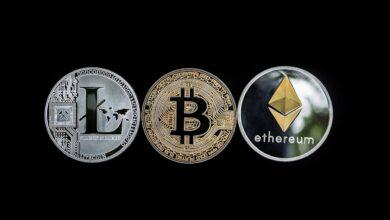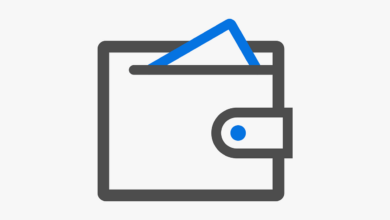Decoding DEX Security – A Deep Dive

In the rapidly evolving landscape of digital finance, decentralized exchanges (DEXs) have emerged as a revolutionary force, offering users an alternative to traditional trading platforms. These systems, built on the principles of decentralization and transparency, promise not only enhanced privacy but also a degree of autonomy that centralized exchanges often lack. However, as we navigate this new frontier, it becomes imperative to engage in a thorough evaluation of the safety and security measures inherent in these decentralized trading environments.
Analyzing the security of DEX platforms requires a meticulous approach, one that embraces both technological sophistication and an understanding of human behavior. The allure of trading without intermediaries can obscure potential vulnerabilities that may exist within these systems. Thus, assessing the protection measures employed by decentralized exchanges is not merely an academic exercise; it is essential for fostering user confidence and ensuring the sustainability of this innovative financial ecosystem.
As we delve into the intricacies of DEXs, we must adopt a critical lens that scrutinizes their architecture and operational frameworks. An effective review will encompass various facets, including smart contract security, liquidity mechanisms, and governance structures. By methodically evaluating these elements, we can better understand how DEXs manage risk and protect users from potential threats. In doing so, we not only enhance our comprehension of these platforms but also contribute to a broader discourse about the future of decentralized trading systems.
Ultimately, our quest to analyze and assess the safety of decentralized exchanges is driven by a commitment to knowledge and an appreciation for innovation. It is through careful scrutiny and thoughtful dialogue that we can hope to illuminate the path forward for traders seeking refuge from the pitfalls of traditional finance while navigating the complexities of decentralized ecosystems.
Understanding DEX Security Risks
In the rapidly evolving landscape of cryptocurrency, decentralized exchanges (DEXs) represent a significant departure from traditional trading systems. These platforms offer users the ability to trade directly with one another, bypassing intermediaries and central authorities. However, alongside this innovative structure, there are inherent security risks that warrant careful evaluation. Analyzing these risks is crucial for anyone engaging in trading activities on DEXs, as the decentralized nature can both enhance and undermine safety.
Evaluating the security of DEXs requires an understanding of their underlying technology. Most DEXs operate on blockchain systems, utilizing smart contracts to facilitate trades. While these contracts can provide transparency and automation, they are also susceptible to coding vulnerabilities and exploits. For instance, flaws in smart contract code have previously led to significant financial losses for users. Therefore, a thorough review of the development practices and auditing processes of these platforms is essential in assessing their overall security posture.
Furthermore, the security measures implemented by decentralized trading systems play a pivotal role in safeguarding user assets. Many DEXs adopt strategies such as liquidity pools and automated market makers to enhance functionality. However, these mechanisms can introduce new vulnerabilities, including impermanent loss or flash loan attacks. Analyzing how different platforms mitigate these risks through innovative solutions–such as insurance funds or multi-signature wallets–is vital for determining their reliability and resilience against potential threats.
Moreover, the user experience on DEXs can significantly impact security perceptions. In many cases, users must manage their private keys and wallets independently, which can lead to human error and increased risk exposure. Reviewing educational resources and support systems offered by DEX platforms is essential for evaluating how effectively they empower users to manage their security responsibilities. A platform that invests in user education may mitigate risks associated with unintentional mistakes.
The regulatory environment surrounding decentralized exchanges also influences their security landscape. As governments around the world grapple with the implications of blockchain technology, regulatory frameworks are continually evolving. Assessing how DEXs adapt to compliance requirements can provide insights into their commitment to safety and user protection. Platforms that proactively engage with regulators may present a lower risk profile, as they are more likely to implement necessary safeguards.
In conclusion, understanding the intricacies of DEX security is paramount for traders looking to navigate this complex ecosystem safely. By evaluating the technologies behind these platforms, analyzing their security measures, reviewing user experiences, and considering regulatory dynamics, stakeholders can make informed decisions about where to trade. Ultimately, a comprehensive approach to assessing decentralized exchanges will foster a more secure trading environment that benefits all participants in the cryptocurrency space.
Common Vulnerabilities in DEXs: An Analytical Perspective
Decentralized exchanges (DEXs) have emerged as a revolutionary alternative to traditional trading platforms, offering users greater autonomy and privacy. However, the very architecture that provides these benefits also gives rise to a spectrum of vulnerabilities. A key area of concern is the smart contracts that govern DEX operations. These contracts are often subject to bugs and exploits, which can lead to significant financial losses for users. For instance, the infamous vulnerabilities found in the DAO (Decentralized Autonomous Organization) highlight how a seemingly robust system can be undermined by overlooked code flaws. Thus, assessing the security of these systems requires a meticulous review of their coding practices and governance structures.
In evaluating the safety of decentralized exchanges, one must consider the various protection measures that developers implement. These measures include multi-signature wallets, which add an additional layer of security by requiring multiple approvals for transactions. Furthermore, several DEXs have adopted formal verification processes for their smart contracts, allowing independent auditors to analyze and validate the integrity of the code before deployment. While these practices enhance security, they are not foolproof; even the most rigorously reviewed systems can be vulnerable to innovative attack vectors. Therefore, continuous monitoring and updating are essential components in safeguarding against emerging threats.
Analyzing the security of DEX platforms also involves scrutinizing their liquidity mechanisms. Many decentralized exchanges rely on automated market makers (AMMs), which use algorithms to determine asset prices based on supply and demand dynamics. While this model promotes efficiency and decentralization, it can introduce risks such as impermanent loss and front-running attacks. The latter occurs when malicious actors exploit transaction ordering to capitalize on price discrepancies before legitimate traders can react. Consequently, a thorough evaluation of these trading mechanisms is critical for understanding potential pitfalls within DEX ecosystems.
Moreover, user education plays a pivotal role in enhancing the overall safety of decentralized exchanges. Regardless of technological advancements and protective measures in place, the human element remains a significant vulnerability. Many users lack sufficient knowledge about how to interact safely with DEXs, leading them to fall victim to phishing attacks or inadvertently expose their private keys. Therefore, fostering a culture of awareness and providing accessible educational resources are vital steps towards bolstering user security.
The landscape of decentralized trading systems is continually evolving, necessitating ongoing assessments and adaptations to meet new challenges. As we delve deeper into analyzing and evaluating these platforms, it becomes clear that collaboration between developers and the broader community is essential for identifying weaknesses and implementing effective solutions. Engaging with ethical hackers through bug bounty programs can provide invaluable insights into potential vulnerabilities before they can be exploited maliciously.
In conclusion, while decentralized exchanges present exciting opportunities for innovation in trading practices, they are not without their flaws. A comprehensive understanding of common vulnerabilities, coupled with robust protection measures and user education initiatives, can significantly enhance the security landscape of DEXs. As we move forward into an increasingly digital future, ongoing vigilance and proactive strategies will be key in ensuring that these platforms remain safe havens for traders seeking autonomy in their financial dealings.
Best Practices for Secure Trading: Evaluating the Safety of Decentralized Exchanges (DEXs)
In the rapidly evolving landscape of cryptocurrency, decentralized exchanges (DEXs) have emerged as a popular alternative to traditional trading platforms. However, assessing the security of these systems is paramount. Security measures intrinsic to DEXs differ significantly from those of centralized exchanges, primarily due to the absence of an intermediary. Thus, evaluating the safety of trading on DEXs requires a comprehensive examination of their architecture and the mechanisms in place to protect users’ assets and data.
When reviewing the protection measures employed by various DEX platforms, it becomes evident that many rely on smart contracts and blockchain technology to facilitate trades securely. Smart contracts automate the execution of transactions without human intervention, theoretically reducing the risk of fraud or manipulation. Nevertheless, vulnerabilities within these contracts can lead to catastrophic failures if not properly audited. Therefore, thorough analysis and independent auditing are crucial steps in determining the robustness of a DEX’s security protocols.
Furthermore, analyzing the historical performance of decentralized exchanges provides valuable insights into their security track record. Incidents such as hacks or exploits reveal weaknesses in specific systems and highlight areas where improvements are necessary. Platforms that demonstrate a commitment to transparency–by publishing security audits and incident reports–are typically more trustworthy. Users should prioritize DEXs that have established a history of effective risk management and proactive response strategies to security breaches.
Ultimately, evaluating the overall safety of decentralized exchanges involves scrutinizing both the technology they employ and the practices adopted by their communities. Best practices for secure trading on DEXs include conducting thorough research before utilizing a platform, utilizing hardware wallets for asset storage, and remaining vigilant about phishing attempts and other cyber threats. As the cryptocurrency ecosystem continues to mature, adopting a meticulous approach to assessing and reviewing the security measures in place will be essential for fostering trust in decentralized trading systems.
Evaluating the Security of Decentralized Exchanges (DEXs)
In the rapidly evolving landscape of cryptocurrency trading, decentralized exchanges (DEXs) have emerged as a revolutionary alternative to traditional centralized platforms. However, amidst their promise of enhanced privacy and user control, the safety and security of these exchanges warrant rigorous examination. Evaluating the protection measures employed by DEXs reveals a complex interplay of technology and user responsibility. By analyzing the inherent vulnerabilities and the methodologies used to mitigate them, one can gain insight into the overall security posture of these platforms.
The fundamental architecture of DEXs is designed to minimize trust in intermediaries, a concept that inherently creates both opportunities and challenges. Unlike centralized exchanges that rely on custodial wallets, DEXs enable users to trade directly from their wallets. This decentralization reduces the risk of large-scale hacks that have plagued many centralized systems. Nevertheless, this model introduces a unique set of risks, primarily stemming from smart contract vulnerabilities. Assessing these factors requires a comprehensive review of how smart contracts are audited and monitored post-deployment.
Moreover, evaluating the security measures implemented by various DEX platforms reveals significant differences in approach. Some exchanges utilize sophisticated mechanisms such as liquidity pools and automated market makers (AMMs) to facilitate trades while maintaining liquidity without central control. These systems often employ algorithms to ensure fair pricing; however, they are not immune to exploits. Analyzing historical data on attacks against these platforms highlights common tactics employed by malicious actors, underscoring the necessity for continuous vigilance and improvement.
User education plays a pivotal role in the overall safety of decentralized trading environments. While DEXs reduce reliance on third-party custodians, they place a greater burden on users to understand wallet security and transaction protocols. Evaluating how various platforms educate their users about potential threats – such as phishing attacks or private key management – is essential in determining their commitment to user safety. A platform that prioritizes user awareness can significantly enhance the collective security of its ecosystem.
In addition to user education and robust smart contract audits, many DEXs are beginning to implement multi-signature wallets as an added layer of protection. This measure requires multiple private keys to authorize transactions, effectively distributing control and reducing single points of failure. Reviewing various implementations of multi-signature technology across different DEX platforms reveals varying degrees of effectiveness, with some exchanges adopting industry best practices while others lag behind.
Ultimately, assessing the security of decentralized exchanges is not merely a technical exercise but a holistic evaluation encompassing technology, user behavior, and community engagement. As DEXs continue to gain traction in the cryptocurrency market, it becomes imperative for stakeholders to remain vigilant and proactive in identifying vulnerabilities and enhancing protective measures. The future of decentralized trading hinges on our collective ability to navigate these challenges thoughtfully and responsibly.





